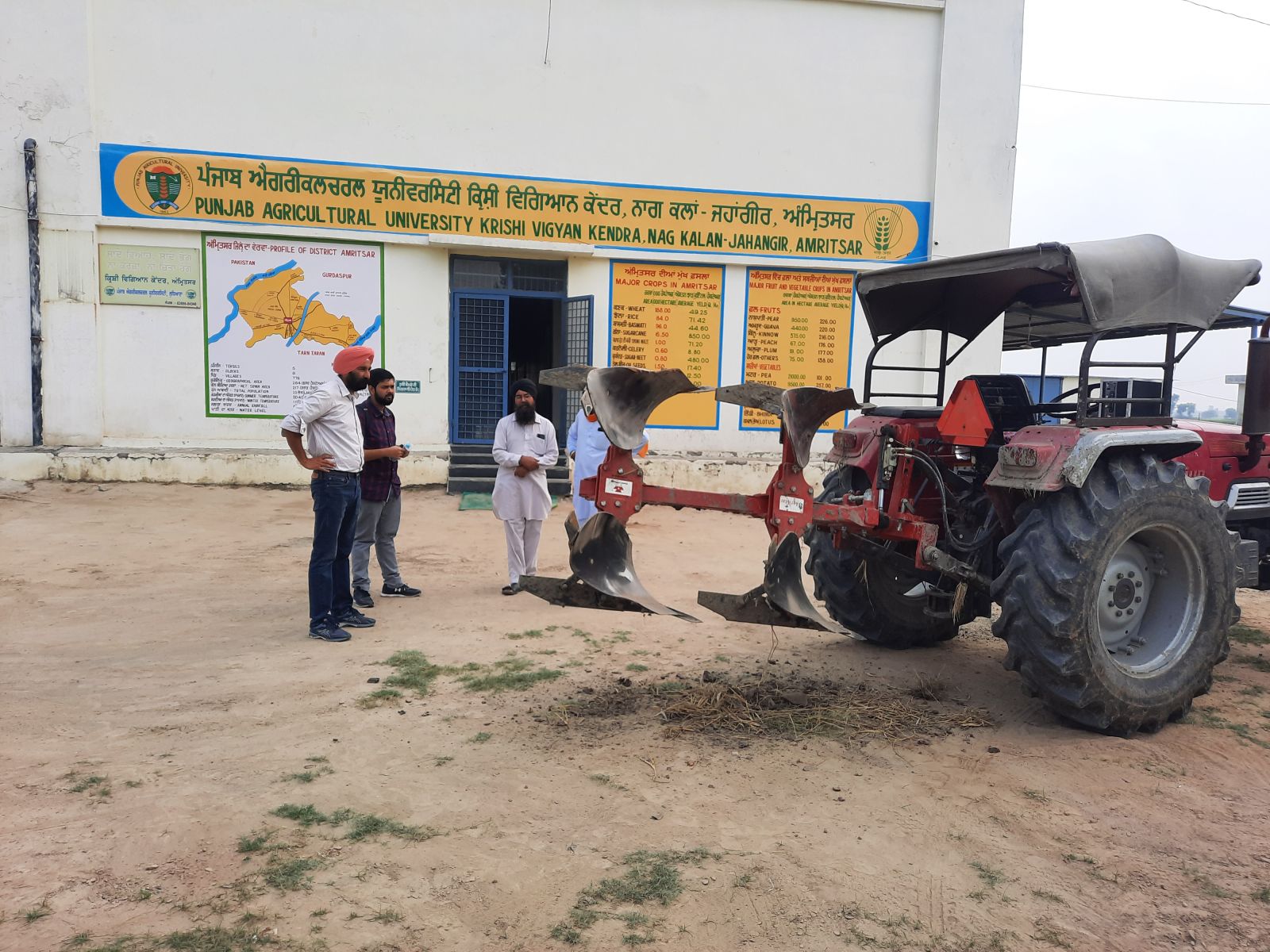



Paddy residue burning is a decades-old practice in Punjab. Pressed for time and short on funds, farmers resort to setting their crop waste ablaze to clear their fields for the winter sowing season. The 25.81 lakh hectares of farmland sown with non-basmati paddy this year in Punjab are expected to have generated 16 million tonnes of residue. Most of this is being burnt. Farm fires provoke a furore each winter when a noxious haze descends upon cities in India’s northern plains, and New Delhi in particular. But what do the farmers themselves have to say about all this? We travelled to Punjab to find out.
A worrying trend
The first leg of our visit covered the districts of Amritsar and Tarn Taran in Punjab’s northern Majha region. Seasonal episodes of stubble burning usually begin here before progressing southward to the Malwa region – which includes Ludhiana, Sangrur, Bathinda, and Patiala districts. In Amritsar and Tarn Taran, we observed vast tracts of farmland that had either already been burnt or had standing stubble that would soon be set alight.
Farm fires usually begin in Punjab’s Majha region and progress towards the Malwa region.

Source: Authors’ compilation; NASA VIIRS 375 m
Fire counts generated from satellite data corroborate our observations. Tarn Taran and Amritsar had the highest fire counts in Punjab in September and October 2021; they recorded 2,275 and 1,291 fires, respectively, during this period. Figure 2 shows a correlation between the rise in Amritsar’s pollution levels between 1 September 2021 and 10 November 2021 with the number of open fires reported. As of 11 November 2021, fire counts in Amritsar and Tarn Taran have remained lower compared to the corresponding period last year, but they are higher compared with 2019 and 2018 levels.
Increase in PM 2.5 levels on days of high farm fires in Amritsar
Authors’ analysis; NASA VIIRS 375 m; PM 2.5 data accessed from CPCB portal
Why do farm fires persist? Why, despite the existence of solutions like Happy and Super Seeders, which can sow wheat unhindered by stubble, do farmers choose to burn their crop waste? Here is what farmers in Tarn Taran and Amritsar told us.
Change is difficult
“I don’t remember a time when we have not burned [stubble] in our 12 acres of land,” said Harminder Singh (name changed), a 32-year-old resident of Tarn Taran’s Golwara village. “I know it destroys soil nutrients but it is not easy to change.”
Harminder wants to buy a Happy Seeder but only sees it “as an additional source of income [in the form of rent paid by other users]”. Excess moisture has so far prevented him from burning this year’s paddy residue, but he told us he intended to burn it “in the next few days”. Like the other 11 paddy farmers we spoke to, Gurjinder is aware that burning residue degrades soil health; yet he and six others were likely to do so this year. The force of habit, coupled with risk aversion, has made many farmers reluctant to try better crop residue management practices.
The challenges of eco-friendly residue management
For farmers who have already experimented with eco-friendly crop residue management, failure is a strong deterrent. Consider the example of Gagandeep Singh (name changed) from Amritsar’s Balkalan village. A couple of years ago, Gagandeep used an MB plough and a rotavator1 to incorporate paddy residue into his farm before sowing wheat. But the results were unsatisfactory. “The wheat I sowed…was discoloured and I think my yield had reduced as well,” explained Gagandeep, who has gone back to burning his residue.
To make matters worse, rising diesel prices discourage farmers from using machines to manage their crop residue. Karanveer Singh (name changed), a resident of Tarn Taran’s Golwara village, said he encountered no problems with his Happy Seeder last year but does not want to use it this winter. “Diesel is very expensive, and using the Happy Seeder will mean putting more money into this crop,” he told us.
A success story
Still, the feeling of doom and gloom over crop residue management machines is not universal among farmers. Rajpal Singh, a resident of Tarn Taran’s Pandori village, has found a winning strategy. He uses a short-duration variety of paddy called PM 121 and manages its residue using the Happy Seeder. “I got to know about PR 121 during a kheti mela. I started using it due to its high yield, low water requirement, and low straw load,” Rajpal told us. “ I rent a Happy Seeder from a local custom hiring center for INR 2,500 per acre. Although it seems expensive, it has helped me save on fertiliser costs and …. improved the soil quality of my field,” he added.
A farmer returning an MB Plough hired from the Krishi Vigyan Kendra in Amritsar

Image source: CEEW
Our field visit to Amritsar and Tarn Taran generated two key insights. First, farmers are acutely aware of the negative impacts of stubble burning on their soil and on public health. Second, we can greatly reduce farm fires by offering farmers technical and financial assistance to promote better crop management. Expanding the penetration of effective crop management technologies and addressing challenges linked to their adoption is the need of the hour.
Keep an eye out for the next blog in this series, in which we cover Ludhiana, Barnala, and Sangrur in the Malwa region and offer specific policy recommendations.
Srish Prakash is a Consultant and L.S. Kurinji is a Programme Associate at the Council on Energy, Environment and Water (CEEW). Send your comments to [email protected]
1MP Plough and Rotavator (Rotary tiller) are used for initial soil preparation such as tilling for sowing crop.






Add new comment